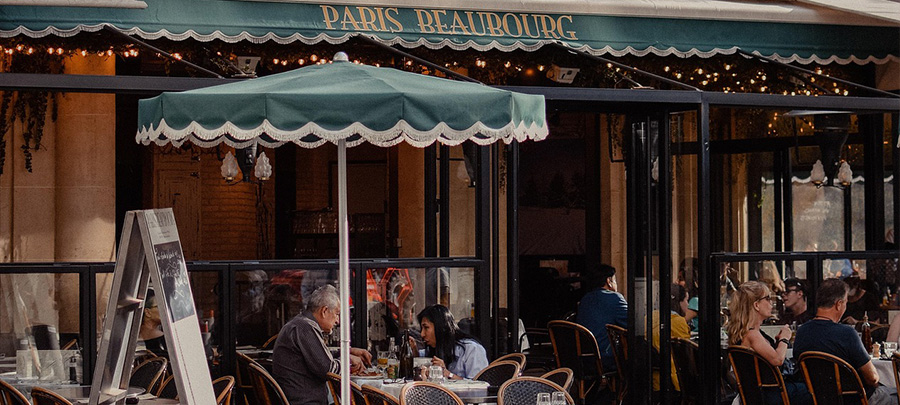

The French wine sector, long a benchmark in global wine trade, is undergoing a period of disruption and adaptation. Global climate pressures, shifting consumer tastes, and evolving trade dynamics are reshaping how French producers, exporters, and importers operate. In this updated outlook, we examine the latest trends and data for 2024 and early 2025, and what they mean for wine importers and the broader growth strategy of France’s wine trade.
1. Macro Forces Shaping 2024–2025
1.1 Climate Extremes & Historic Low Production
France’s 2024 harvest was one of the worst in decades. According to studies by Agreste and the OIV, production fell by around -23 % year-on-year, landing at approximately 37 million hectolitres — the lowest levels in recent memory.
All wine categories were affected: AOP, IGP, bulk, and wines for distillation.
The drop reflects the cumulative effect of frost, storms, disease pressure (e.g. mildew), and general climatic volatility.
This sharp contraction in supply is a major pivot point for French wine’s export and import dynamics in the near term.
1.2 Global Trade & Export Performance
Although volume has stabilized, value has come under pressure. From January to October 2024, France shipped ~10.8 M hL in exports, roughly flat with 2023, but revenues declined ~5 % to €9.58 bn.
Overall 2024 export volumes grew marginally (~+0.7 %), but value fell ~3 % – a reflection of buyers seeking more affordable wines.
In total, combined wine and spirits exports reached €15.6 bn in 2024, slipping in value but holding relatively in volumes.
Even so, in dry and sparkling wine categories alone, French exports in 2024 were ~€10.9 bn, again outpacing Italy in value, though Italy maintains strength in physical volume shipped.
Meanwhile, the global wine and must trade in 2024 was almost flat, with a slight +0.8 % increase in volume (to ~100.2 M hL) and a 0.5 % fall in value (~€36.04 bn).
Notably, bulk wine was the only major segment to grow in value (+9.3 %) and saw increased share in international trade.
1.3 Domestic Demand & Consumption Decline
French wine consumption continues its long-term downward trend. In 2024, consumption fell ~3.6 % vs 2023, reaching 23 M hL — the lowest since the early 1960s.
Per capita consumption is also under sustained pressure, especially among younger demographics.
Red wines, traditionally the pillar of French wine culture, are particularly challenged: younger consumers are shifting toward whites, rosés, or alternate beverage categories.
In response, many producers are trimming vineyard footprints and even voluntarily uprooting less-profitable sections. Some estimates suggest that tens of thousands of hectares might be slated for “grubbing up” (vine removal) in coming years.
2. France as an Import Market: Trends & Prospects
While France is globally known as an exporter, the country also imports wine — and the dynamics of inward trade have shifted in recent years.
2.1 Import Contraction & Adjustments
In 2024, France reportedly cut its wine imports by ~9.7 %, a symptom of both weaker domestic demand and a drive to prioritize local production where possible.
Competitive pressures from domestic scarcity may make importers more selective, focusing on differentiated, premium, or niche wines less well served by French supply.
According to OEC data, from 2022 to 2023, France increased imports from Italy, Spain, and Germany — suggesting that even an exporter like France remains open to renowned foreign sources.
2.2 Opportunities in France’s Wine Market Growth
On the demand side, forecasts from Grand View Research project that the French wine market (domestic + imports) will grow from ~USD 51.29 bn in 2024 to reach ~USD 79.74 bn by 2030, at a CAGR of ~7.9 %.
Sparkling wine is identified as the fastest-growing segment over that forecast period, while table wines continue to dominate in revenue share.
For importers, this means that premium, sparkling, and differentiated varietals (organic, low-intervention, etc.) may find faster growth potential in France compared to bulk, commodity wines.
2.3 Role of Wine Importers & Network Evolution
As the French wine trade adapts, importers serve vital roles:
-
Bridging niche or international terroir gaps — bringing wines France doesn’t produce well (e.g. New World, alternative varietals, or climate-resilient grapes).
-
Flexibility in supply — when French production falters, importers may buffer supply gaps, especially for hospitality and retail chains.
-
Innovation adoption — importers can introduce sustainable practices, alternative packaging, low-alcohol or no-alcohol wines, and digital engagement strategies.
Still, the pressure is higher: importers must compete not only on quality and story, but on efficiency, logistics, and resilience in volatile times.
3. Key Trends Importers Should Watch in 2024–2025
Below are specific priorities and strategic trends for wine importers targeting the French or European markets now:
3.1 Premiumization & Value Over Volume
With global supply constrained, buyers are more selective. Wines with strong provenance, differentiation, or story can command better margins. Wine trade data shows that although overall volume is under pressure, average export prices are holding or rising.
Bulk wine is the one segment showing value gains — but bulk is less relevant for importers focused on bottled consumer wine.
3.2 Shift Toward White & Alternative Styles
As the appeal of red softens among younger drinkers, white wine, aromatic whites, and fresh styles are gaining traction. Some sources point to a resurgence in white as rosé’s popularity tapers.
Importers might prioritize aromatic whites, hybrid varietals, or regionally distinct whites that appeal to evolving palate trends.
3.3 Sustainable, Organic & Tech-Enabled Wines
Consumer demand for sustainable, organic, biodynamic, and low-intervention wines continues to rise. Importers can differentiate by curating such lines.
Moreover, technology (AI, precision viticulture, vineyard sensors, smart logistics) is gaining ground in the wine industry. A recent study even highlights how AI can optimize vineyard management, production, and wine tourism experiences.
Importers who partner with producers leveraging smart tech may gain a storytelling edge and better risk mitigation.
3.4 Resilient Supply Chains & Diversification
Given climate volatility, importers would be wise to diversify sourcing across regions and countries to buffer against crop failures.
Also critical is flexibility in packaging (bag-in-box, canned, alternate formats) and shorter lead times, enabling better responsiveness.
3.5 Strategic Import Alliances & Co-Investment
Importers may increasingly partner with producers or invest directly in vineyard projects as “win-win” models, sharing risk and co-developing brands targeted at specific markets.
In an environment of shrinking margins, alignment on marketing, logistics, and consumer access is more essential than ever.
4. Implications & Recommendations for BestWineImporters’ Audience
-
Focus on niche, premium & climate-resilient wines — the “middle of the road” commodity wines will be squeezed.
-
Embrace storytelling, sustainability, and innovation as differentiators in pitch decks and catalogues.
-
Strengthen logistics resilience — alternative routes, buffer stock, and flexible packaging can mitigate supply shocks.
-
Monitor evolving French domestic policy & incentives — as France grapples with vineyard restructuring, import rules, subsidies, or compensation schemes may affect the competitive landscape.
-
Pursue strategic partnerships — importers who move beyond pure distribution toward co-investment or brand-building will be better positioned long-term.
WINE IMPORTERS IN FRANCE
Arte del Vino
Address: 13 Bis Quai Sadi Carnot, Laval
Phone: +33 6 32 24 14 15
Website: www.artedelvino.fr
Marta Vini
Address: 1165 Promenade Marie Paradis
Chamonix-Mont-Blanc, Auvergne-Rhône-Alpes, Haute-Savoie, 74400
Phone: +33 7 89 27 44 76
Website: https://marta-vini.com/www.carniato.com
Continent du Vin
Address: 1, Rue De L’ardèche, St. Herblain
Phone: +33 2 40 65 62 53
Website: www.continentduvin.fr
Producers interested in the French market can find a database with top French wine importers, distributors and retailers here.





